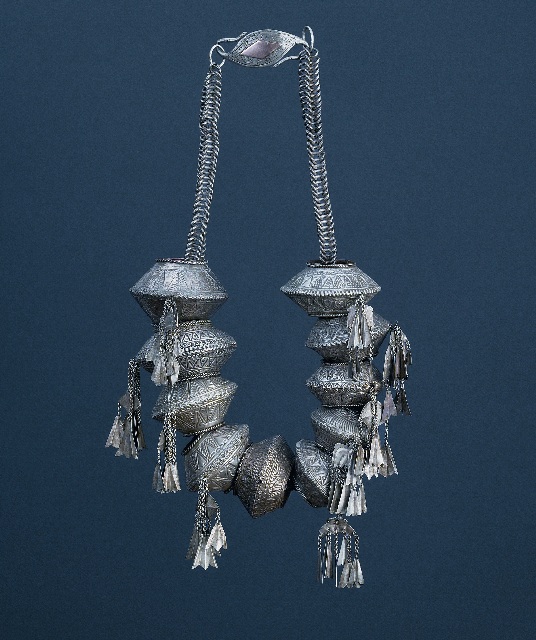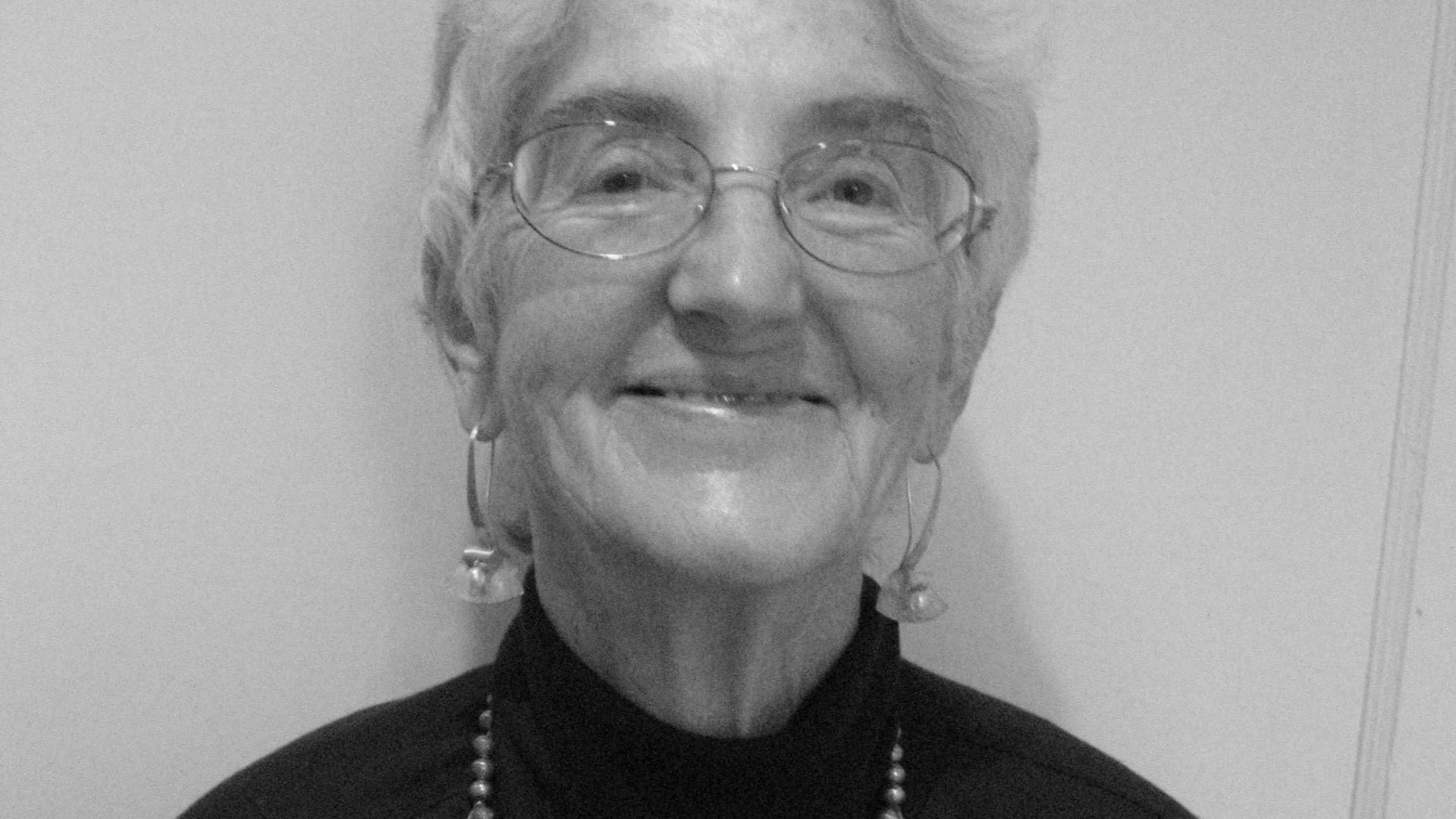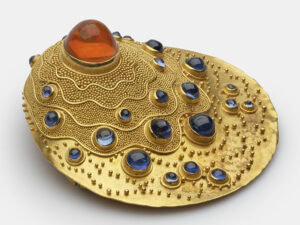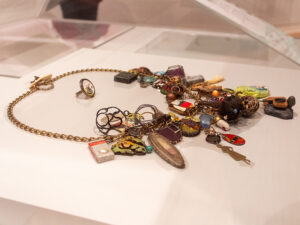In the late 1950s, Dr Ümit Bir set out with his stethoscope in his bag, traveling around the world and including frequent visits to Turkey, his home country. In 1960, he met an architect, Dr Rudolph Steinbach, who gave the order to ‘start collecting!’ Trained in ‘the strenuous and exacting practice of medicine,’ Bir turned out to be a good photographer, a note-taker and a methodical arranger of the artifacts he discovered. In the late 1990s, his growing collection was uncovered by Dr Wolf-Dieter Seiwert, who first curated an exhibition of Bir’s collection and then wrote a book about it called Jewellery From the Orient: Treasures from the Bir Collection.

Bir was a big traveler, something represented by the diversity of objects in his collection. After seeing Greece, Turkey and North Africa, he visited Afghanistan, Iran, Nepal, Tibet and China. He was greatly assisted by his upbringing, in which he learned Turkish, French and German, the language of his adopted country where he practices medicine. Conveniently, the book is arranged by individual countries and will be of particular interest to world travelers (and scholars) who have work from the different regions. Each piece is listed in the appendix, which gives complete details of the construction, materials, weight, country of origin time and place of acquisition.
The book is somewhat wordy, but ethnographers will love it! For example there is plenty of history, covering subjects as diverse as the Queen of Sheba, ancient trade routes, the Himalayan region and quotes from the Qur’an about the Hindu Kush. While the photographs taken by Bir reveal a great deal about the areas he visited, there are too few showing how the actual pieces were worn. And it takes work to find out this information. For example, you gradually discover that women were responsible for maintaining local traditions and valued jewelry for their dowries, for telegraphing their status as married, or simply to honor and protect their sons. Throughout the whole Near East and the Balkan regions, a woman would receive one or more head coverings, a neckpiece, a pair of bracelets and one or more rings. It was considered to be her property and was either worn while she worked, on special occasions, or put away for her children. If she fell on hard times she could sell her jewelry. Men tended to be less decorated. In several countries they wore a knife or dagger. In other countries they had a string of prayer beads, a pistol, cigarette holder or heavily ornamented belts.
Each country had its own particular style and color. Coral, a particular favorite in North Africa, had the virtue of representing blood and fertility, but also had a protective effect. Turquoise was favored in Nepal and China, with locals studding their ornaments with bezeled fragments in earrings and amulets. Some of these were associated with a particular technique favored by local craftsmen. In North Africa there was champlevé enamel, with the traditional colors of yellow, green and navy blue. There was fire gilding in Nepal and damascening in North Caucus.
Reading a book like this raises the question of how ‘ethnic jewelry’ differs from, or can be distinguished from, contemporary or art jewelry. Unlike today, jewelers are responsible for the craft, while the customers bring the message or purpose behind each piece, even bringing in some of their own metal to be worked on for a specific purpose. Ethnic jewelry is supposed to provide protection from harm and bring blessings on the wearer, not to mention its value as an investment. It serves as treasure and is kept in bags and boxes rather than presented to the public – unless the family has an emergency and has to leave in a hurry. A sad example of this occurred in 1969, when Bir was approached by an old woman who said, ‘My child is ill. I have no money to pay a doctor. Do you want to buy this bangle?’ Bir noted, ‘I have the bangle. I have the photo of the woman and the scenery.’
There was no sure way of deciding what was good quality and what was not. Tradition was the most important factor and the customer was mostly right. But as tourism became increasingly popular – as did bargain hunting – shopping became more of a two-way street and there was less demand for traditional work. A few jewelers left these countries, particularly if they were Jewish. There was an increasing number of rich or upper middle classes, some of whom wanted gold, silver and diamonds. At the lower end, more people favored plastics and non-precious metals. The quality of Moroccan enamels slipped, displaying sloppy wire and poorly filled cloisons.
Bir was always very careful where he bought his pieces. He followed the paths of destruction and dismay that caused the breakup of the USSR into a multitude of ‘stans,’ and the catastrophic results of the Vietnam war, which resulted in 250,000 to 300,000 Hmong and Mien migrating to the United States. Two-thirds of the Afghan ornaments in his collection were bought in situ from 1971 to 1975; the rest he found in other trips to Central Asia. Bir also frequented European markets in Paris, Cologne, Hanover, Munich and sometimes America.
Seiwert’s book is a little weak on current events, partly because Bir was collecting work from the earlier twentieth century and because his collection is divided into geographical areas, rather than following an overall chronology. Fortunately, the excellent photographs by Christoph Sandig, coupled with Bir’s notes, make it possible to offer an accurate description of the collection – which stretches from Russia and Afghanistan to China – giving details of country of origin, size, metal and stones. So if you have a piece from anywhere in the ‘Orient’ you can look it up, and say ‘wow!’





